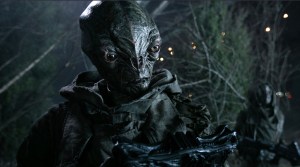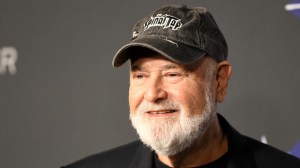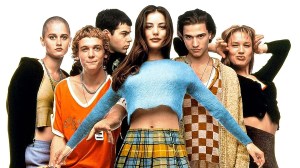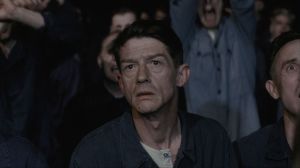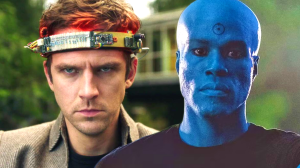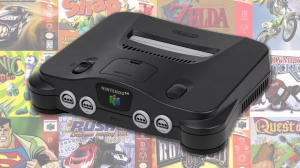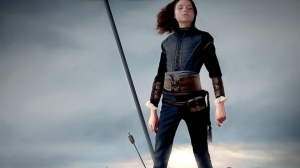Since you have no doubt heard a million stories of how editorial or corporate interference ruined comics, movies, TV, and more, how would you like to hear a case in which it actually improved the work?
Videos by ComicBook.com
Well, that case is Gail Simone’s fan-favorite run on Secret Six.
The series, which starred a group of C-list villains but infused them with so much soul and humanity that fans fell in love, was launched as part of the run-up to DC’s 2005 crossover series Infinite Crisis. One of four high-profile miniseries that were supposed to set the stage for the future of the DC Universe, Simone’s series caught fire and became the basis for her Secret Six ongoing.
And, over the weekend, Simone shared her own Secret History of the Secret Six with fans on Twitter.
You can read the full thread here, or the transcribed version we have laid out below:
“Okay, since it is in my mind, here’s how Secret Six happened.
“I have told this story a bunch of times. But I always leave out the middle step because it’s a bit complex.
“So, DC Comics was going to have a big crossover event and they want four six-issue minis to tie in. This stuff happens all the time, usually, they are bland at best. It’s just a weird fact. But for whatever reason, they picked teams that really wanted to do something awesome and they gave us the room to do it. Greg Rucka on The OMAC Project, Bill Willingham on Days of Vengeance, Dave Gibbons on The Rann-Thanagar War. Just top people. Great art, too.
“And man, I was THRILLED to be asked to do one, I was in awe of those writers and a big fan of crossovers. Love em to this day, and this was my first chance to have a big part in one. A little intimidating.
“And I found out I would be doing Villains United, which is the one I would have chosen in any case. And DC Comics was great, they wanted big, meaningful stories. So I had to compete with my heroes (friendly competition!).
“And it was my first time with access to so much of the DCU. So, intimidated but happy. And the other writers were BRINGING it. Dave with great space opera, Bill making the magic DC characters awesome, and Greg doing great conspiracy stuff. No slackers!
“So, I turned in my first outline. It was a massive story with all the a-list villains, Luthor, the Joker, The Rogues, everyone, it was huge, all-star cast stuff.
“I was super excited. There had never quite been an all A-list villain book at DC before.
“Then I get a note back from the editors…very nice, very apologetic.
“None of the characters I asked for could be used, not one. Now, it was because they were all going to have roles in the main series, so it made total sense, but I was a bit crestfallen. How do you tell a huge villain story with no star villains?
“People have heard me tell this part of the story, but not this next bit. 🙂
“So I wanted to have that excitement that you would get with A-listers, but I couldn’t use any A-listers.
“Eventually, I get this second idea.
“I thought, ‘okay, what if I use the WHOLE sandbox?’ Like, what if I take one villain from every dimension or time period? What could show the scope of the DCU better? So, I’m like, let’s take a villain from Gemworld, and Skartaris, and the future of the Legion of Super-Heroes, and from Anthro and Jonah Hex, and so on? Villains ported in from the entire history of DC publishing?
“If there was an awesome DC book and there was a bad guy in it, we would pluck them from that book and put them in Villains United. So, Deimos, Enemy Ace, Dark Opal, Mordru, all these dozens of characters who don’t ever interact with the JLA, really.
“I was excited.
“And I got another editor’s letter.
“Again, DC could not have been nicer but we were informed we couldn’t do that, either. It was too complicated as they [were] moving away from a multiverse.
“And time was running out. The artist was the brilliant Dale Eaglesham and he was going to need a script right away.
“So, honestly, it started as a joke. We should just pick the crappiest villains that no one in their right mind would want. Then that actually started to sound interesting. So I picked a bunch of losers too low to even be on the Suicide Squad. The closest thing we had to a star was Deadshot, whom I included as homage to the brilliant John Ostrander.
“Everyone else was a disaster: A random, nameless parademon, a crappy golden age legacy who didn’t even have his father’ s powers. One of Vandal Savages thousand of bastards. A war criminal poison specialist. And Deadshot.
“All approved. Time was running out.
“But they balked at Catman.
“Catman was a loser his entire career. No one cared about him, and to make it worse, Kevin Smith solidified his cowardice and uselessness.
“But then I thought, hey, the DCU needs a Tarzan.
“It was the one thing they said no to. He could not be redeemed. It was felt. I begged. I pleaded. I tried to explain what was in my head. No go.
“Then I got sneaky. I explained that if it didn’t work, I would kill him off.
“Yep, that was my genius move.
But @daleeaglesham totally got it. His first page with Catman was this. His FIRST PAGE. pic.twitter.com/xrwOYNpSJx
— GAIL SIMONE (@GailSimone) April 5, 2018
“And the next morning, I get a note from DC: ‘Okay. We get it now.’ Full steam ahead. CATMAN APPROVED.
“So, if you live Catman and Secret Six, remember it was all hanging on Dale Eaglesham’s genius. He sold it with his art. AND it only happened because EVERY REAL VILLAIN WAS DECLINED.
“I have two little footnotes. First, Dale gifted me with the original art for that page. He could have sold it a hundred times.Gave it to me.
“And finally, Villains United was going to reveal that KITE MAN was secretly running all crime in the dcu. We lost that one.
“That’s how Secret Six came to be. It would not have been nearly as interesting if we had gotten our way!”
The story sounds somewhat similar to what Keith Giffen has said about Justice League International‘s origins in the late ’80s. Expecting that he and J.M. DeMatteis were to write a classic “big seven” Justice League comic. Instead?
“Our particular Justice League tail-ended out of the Legends crossover event, which meant we had zero input when it came to which characters would form the Justice League,” Giffen wrote in a recent hardcover collection of the series’ earliest issues. “As much as I’d like to claim some credit for the inclusion of characters like Guy Gardner, Blue Beetle, Booster Gold, etc., that call was DC’s to make and, as it turned out…not too shabby. To this day, I can’t believe they let us have Batman.”

